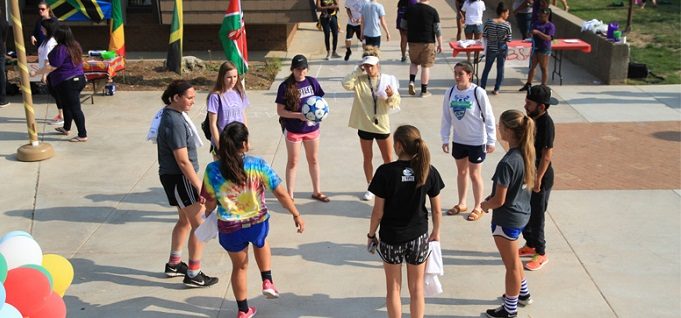Year-round Pell opens opportunities for students
By Ellie Ashford
August 9, 2017
The reinstatement of year-round Pell grants is good news for community college students who otherwise had to take the summer semester off or find other ways to pay for that term.
Getting Congress to approve the use of Pell grants for programs outside the traditional academic calendar was a top legislative priority of the American Association of Community Colleges and was highlighted in AACC’s successful #PellYes campaign on social media.
Year-round Pell was available in the 2009-10 and 2010-11 academic years, until budget constraints prompted lawmakers to nix it. Congress restored it in May, and the U.S. Department of Education announced Pell grants for the current summer session would be available beginning July 1.
Other funding sources
“We’re excited about this,” said Leslie Buse, assistant director of financial aid at Northeast Iowa Community College (NICC).
But like most community colleges, NICC isn’t able to offer Pell grants for the summer semester until the summer of 2018. Students at NICC had already completed financial aid applications when year-round Pell was approved.
Having summer Pell grants to look forward to “opens up a whole new avenue of relief for students,” Buse said, pointing to one student who had been at a four-year college, didn’t graduate and enrolled at NICC to get some job skills but is carrying a large amount of student debt.
Many students at NICC had already used up their 2016-17 Pell funds, so they had to borrow tuition money from family or friends or find other resources if they wanted to take classes this summer, Buse said. In some cases, the college helped out with leftover scholarship money.
“It becomes so stressful for students trying to figure this out,” she said.
A few students who had earned enough credits to be considered a sophomore this summer qualified for an additional $1,000 in loans. Others just didn’t register for the summer session.
Many NICC students in technical and career programs – and the employers who want to hire them – want to get through college as quickly as possible, Buse said. To help with that, NICC worked to shorten some programs from two years to one year, but that means students have a larger credit load per term.
Planning ahead
Butler Community College in Kansas expects to provide Pell grants for the current summer session for students taking at least six credit hours, according to Sheryl Hayes, a financial aid program specialist.
There are about 50 students who are Pell eligible and used up their Pell funds for the year and now are paying out-of-pocket for the summer session. They would be eligible for reimbursement if they apply for financial aid in time, Hayes said.
About 3,600 Butler students had applied for financial aid for 2016-17 and are enrolled this summer. Of that group, 412 students weren’t enrolled full-time in the fall or spring, so they had leftover funds to cover the summer semester.
Other students paid out-of-pocket for summer school or received activity scholarships – for programs like athletics or music – which are covered by the college. Butler doesn’t have data on how many students didn’t enroll in the summer session because they didn’t expect to receive Pell funds.
Tuition at Butler is $67 per hour for in-county students, and fees raise the cost to $100. A Pell Grant could provide $2,900 for a summer semester, because it covers books, fees and living expenses, as well as tuition.
Butler students enroll as early as December for the summer semester. Knowing that Pell funds are available “gives them a chance to plan ahead,” Hayes said.
Boosting completion
A report published in July by the Community College Research Center underscores the effectiveness of year-round Pell in promoting college completion. For each $1,000 of year-round grant funding per eligible student, the likelihood of summer enrollment among those students increases by 27 percentage points, the report found. In addition, the likelihood that those students will complete an associate degree increases by 2.2 percent points.
There’s more to the story. Read the full article in CC Daily.


